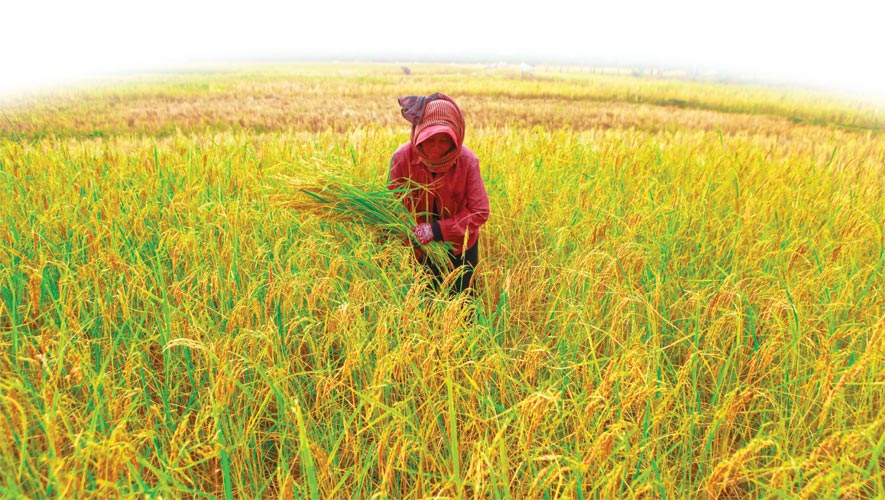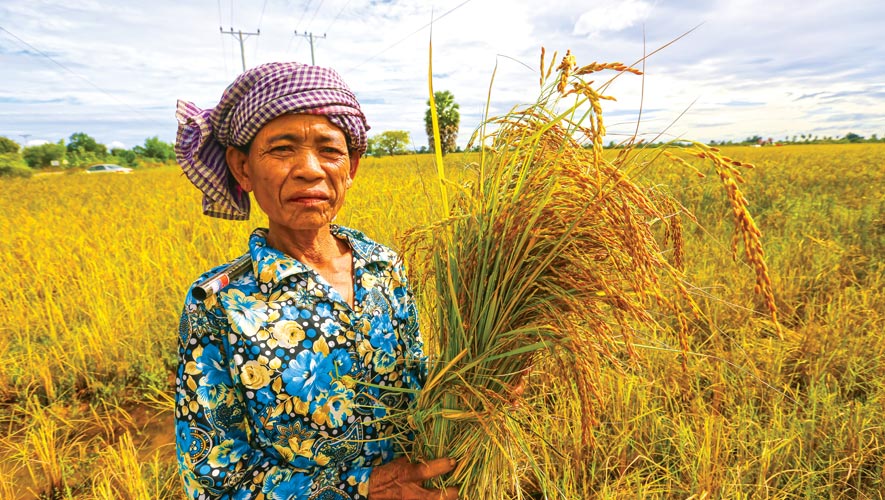Rice producing Cambodia looks to water security measures to sustain production
For the latest Cambodian Business news, visit Khmer Times Business
As the earth heats up, the impact from climate change on global socio-economic development and environmental sustainability is becoming obvious as time goes by.
The projection for the next 80 years states that Cambodia’s temperature would rise 0.013 degrees Celsius to 0.036 degrees Celsius per year by 2099 depending on location. The rate of temperature increase is higher in low altitude areas than in high altitude areas. This is expected to cause declines in dry season rainfall, and prolonged droughts.
“Climate change has significant physical and monetary damage to our country’s economy and livelihood,” Environment Minister Say Sam Al says.
However, the Kingdom has implemented practical solutions to ensure sustainable development in light of rapidly changing climate.
“Cambodia is rich in water and resources for renewable energy where much of it remains untapped. Improved access to food, water and energy, coupled with low carbon development via technology transfer, legal reform and fiscal incentives, are solutions we seek to sustainable development,” he says.
The Mekong River Commission secretariat says that variations in hydrology will follow changes in precipitation or rainfall.
Assessed over various climate change scenarios, a wide range of future impacts are predicted, including an increase in water level fluctuation in the Mekong River due to rainfall pattern and intensity in the wet season, which could cause increased flooding.
This is on top of the damage that is expected to hit agricultural production, and shortage of domestic water supply.
The Mekong and Tonle Sap rivers play vital roles in maintaining aquatic ecosystems and provide natural resources bases for national economic and social development. Agriculture and fisheries are one of main income sources for the nation, and communities.
Developing countries like Cambodia face higher challenges as meteorological systems are not yet able to accurately forecast extreme weather.
At the same time, increased water demand by the industrial and agriculture sector, and domestic use, can lead to social issues.
The total amount of water resources in Cambodia is 289.4 billion cubic meters. Average annual rainfall is 1,598.4 millimetres while total water usage for amounts to 7.9 billion cubic meters. Of the total, the agriculture sector uses 96 percent, domestic consumption (three percent) and industrial (one percent).
Without improved management, changes in water availability could lead to reduced water quality and greater water scarcity, leading to increased competition between sectors and different users. This will be felt most acutely by small-scale farmers and fishers, and the poor.
Irrigation infrastructure is insufficient and old, which would impact water storage, distribution and supply, sanitation and food production.
Keo Piseth, director for independent think-tank Asian Vision Institute’s Centre for Sustainable Studies tells Capital Cambodia that to resolve water issues, Cambodia needs to strengthen the irrigation system and manage water efficiently.
Since 1993, the Cambodian government has invested some $1.5 billion on the irrigation system which now covers 70 percent or 1.7 million hectares (out of a total 2.5 million hectares) of rice fields.
Chann Sinath, undersecretary of state of the Water Resources and Meteorology Ministry, asks that farmers stop using water carelessly.
“They should plant rice twice a year only. We use water for all sector, so we have to think of water security” Sinath adds.
Piseth, however, points out that the irrigation system of is an issue as it has it has not reached all areas while some systems are not restored. With climate change, a weak irrigation system would result in negative effects.
Farmers would not be able to cultivate, which could see the end of the farming sector as farmers migrate to towns to look for a sustainable income.
“If we have a proper system, farmers would be able to earn from 30,000 riel ($7.5) to 40,000 riel ($10) per day,” he adds.
Recently, provinces such as Siem Reap, Pursat, Battambang and Banteay Meanchey, Kampong Thom, and Kampong Cham were hit by drought. More than 17,000ha of rice fields were affected in Banteay Meanchey’s Preah Netr Preah district, 7,723ha in Battambang, 7,563ha in Kampong Thom and 5,398ha in Kampong Cham. Distribution of rice seeds were ordered by the government for farmers to offset the damage.




